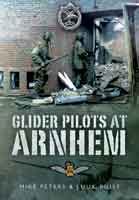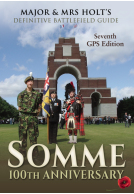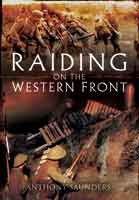Glider Pilots in Sicily (ePub)
Imprint: Pen & Sword Military
File Size: 5.6 MB (.epub)
Pages: 306
ISBN: 9781783378487
Published: 20th November 2012
| Other formats available | Price |
|---|---|
| Glider Pilots in Sicily Paperback Add to Basket | £11.99 |
This well-researched book by an expert of his subject lifts the veil on the first large scale British use of gliders in action. This occurred in July 1943 as a key part of Operation HUSKY, the Allied invasion of Nazi-occupied Sicily from bases in North Africa.
Flying in large numbers of troops by night over sea against a well trained enemy would be a challenge at any time. But, as the author reveals, the newly formed airlanding forces and the pilots of the Glider Pilot Regiment woefully lacked the necessary training and experience. The result was little short of a total disaster with over 300 men drowned and few troops landing successfully enough to carry out their missions.
Thanks to shining examples of collective and individual heroism by survivors, a total catastrophe was averted. The successes and failures of this overly ambitious venture make for fascinating reading and classic military history. The book also covers the formation of air landing and airborne forces.
The men of the Glider Pilot Regiment, which had the highest casualty rate of any British unit of the War, certainly lived up to their motto – Nothing is Impossible.
A bedrock study for anyone interested in, or needing a source on British glider operations.
Society of Friends of the National Army Museum
Fantastic reading. But had to give it 4 stars. The book is written by a British author relying heavily upon sourced documents from the British National Archives and The Glider Pilots Regimental Association's magazine The Eagle. Lost 1 star for the LADBROKE glider mission. The Sicily glider invasion was a combined assault made up of U.S. and British forces. Without the investment in researching the U.S. Army Air Forces (USAAF) documents, I feel there is truly an unfounded bias in the telling of the LADBROKE mission that repeatedly attempts to discredit the USAAF pilots and cast a blanket of blame upon them for so many lost lives. Prior to the invasion, British glider pilots had no previous experience flying the American Waco CG-4A glider and what little training they received in North Africa left them as inexperienced in flying the CG-4A as the statements claimed by many uninformed authors who publish that the C-47 pilots of the 51st Troop Carrier Wing, namely those of the 60th and 62nd troop carrier groups, were the inexperienced. Most of the British glider pilots had one hour or less night flight training in the CG-4A glider, and this in calm air for an invasion that was to take place not only at night, but over water in high wind conditions.
James L Moffet
The U.S. Troop Carrier Command (TCC) in Africa was activated on March 20,1943, a new command in that theater. Up to this point, the 51st Troop Carrier Wing was an air arm well experienced in delivering supplies, transporting personnel and medical evacuees, and had combat experience dropping paratroops (60th Troop Carrier Group) in Operation TORCH, while another, the 62nd, made two paratroop drops in Tunisia. It was not until Sicily that the wing truly became a tactical unit. TCC had had no airborne staff representation within the Central Planning and Operations Headquarters known as "Force 141." Troop Carrier Command's routes, tactics, and procedures were not included in the tentative invasion plans. What little TCC did know was passed along from The Northwest African Air Forces to which they were a subordinate. Troop Carrier plans were not completed until 2 weeks prior to the Sicily invasion and these were then changed 48 hours before the airborne invasion so as to coincide with the routes already outlined by the the combined navies which forced the Troop Carrier planes to execute a long circuitous route by way of Malta.
The route and flying conditions on the night of July 9/10 would have been trying for even the best of pilots and navigators. The 3 landing zones chosen, and the glider types, dictated the release height and distance from shore. For the Waco CG-4A, based on its its height-to-distance glide ratio, the heights were initially set as 1,100 feet and 1,500 feet from a distance of 3,000 yards (almost a mile and three fourths) from shore. With a shortage of US aircraft, and their need for later lifts, the pilots were instructed to get no closer than 3,000 yards so as to avoid radar upon reaching Sicily and to minimize the risk of being shot down. The high winds, with recorded gusts up to 45 mph, altered the entire LADBROKE mission for both tug and glider pilots. The glider release heights were raised to 1.900 feet for the CG-4A's and 5,000 feet for the British Horsa glider. This change was made by Colonel Chatterton himself, in command of the British Glider Pilot Regiment, where he claimed in his book The Wings of Pegasus that he did not want the gliders to be too high and land too far inland and that since he did not have direct telephone communications with the six take-off strips, that "somehow or other the height would have to be put round by word of mouth." Do we know it got to all the U.S. C-47 tug pilots?
It was expected that little resistance would meet the U.S. aircraft and their gliders, but instead, both heavy and light anti-aircraft guns, machine guns, tracer rounds, parachute flares, and search lights welcomed the unarmed and unarmored C-47 flight. A single flak burst or tracer round would set a C-47 into a ball of flames without the self sealing fuel tanks that tactical aircraft had. There was a haze that obscured the coastline which in fact was a layer of dust kicked up from the high winds mixed with smoke from the burning fires set ablaze earlier by previous bomb runs. The quarter moon was little help and was hidden at times in the clouds. U.S. records reveal that most of the tug pilots felt that the altitude of approach to release point was made at such an angle that it was too high to get a silhouette of the land against the sky and too low to benefit from the differentiating contrast between the rough sea and shoreline. Even with this, 86 percent of the Troop Carrier tug pilots reported that they believed they had released their glider at the established release point, many at 1,800 feet and higher, regardless of the fact that several tugs had to make more than one pass.
The claim that many of the gliders were cast off too far from shore has merit, but one that even the tug pilots were certainly not aware of, let alone the military planners. The Waco CG-4A glider was given a 15:1 glide ratio based on the calculated equations of its designer, Waco. Early in the glider program, USAAF personnel associated with the CG-4A would have been trained using this number. At a release altitude of 1,900 feet in calm air, the glider was estimated to glide a distance slightly over 5 miles -a very safe margin exceeding the release distance of 3,000 yards from shore. However, the glide ratio of the CG-4A, at some later point after Sicily, was changed by the U.S. military to be a seemingly more realistic 10:1. At this same release altitude the CG-4A would have covered 3.5 miles. But the true glide ratio was even less and in actuality, the CG-4A would have covered slightly over 2.75 miles on a straight path in calm air by an experienced glider pilot. Add a 30 to 35 mph headwind or cross wind, a turn or two, and this distance is reduced even further -which would account for what actually happened and why so many gliders landed in the sea. Is it the "inexperienced" AAF tug pilots who should be stained by accusations that the gliders were released too far out to sea or too low, or might the true blame lie in the skewed Waco glide calculation and the severe wind forces? The tug pilots released the gliders on the knowledge they knew about the CG-4A, and records indicate many did in fact go to higher altitudes to compensate for the greater release distances which should have given the British glider pilots the best chance of landing on Italian soil, and not in the sea. I do not know of any historical author/researcher who has gone to any great depths to correct this unfounded accusatory claim and set the record straight once and for all. The USAAF tug pilots were not as inexperienced as rumors and misinformed authors would tend to believe, or publish.
I am just back from a few days on the Arnhem trail and there are few things more humbling than a visit to the cemetery at Oosterbeek where you can get to grips with the sacrifice and the valour of the British 1st Airborne Division.
War History Online
This wonderful book by Mike Peters brings to life an epic tale of the men who made the airborne invasion of Sicily happen. It is an essential read for anyone immersed in the Market-Garden story, because it explains something about the psyche of the men who were there and gives you a window into the lives of people who came through a Sicilian nightmare only to die a year later. The two schemes are, surely, inextricably linked.
There are adventures new to me, such as the amazing Turkey-Buzzard flights towing gliders out to North Africa from Britain. In fact a great deal is made of the aviation role, the book is not all airborne-centric. The skill of the RAF pilots is a significant aspect of the book and much is made of the bond between the glider pilots and the aircrews. The darker side is the relationship between many of the glider crews – some of whom were Americans and the USAAF tug crews. It all went very badly over Sicily and I don’t need to add any grist to the mill.
The details of the planning and training for Husky is well covered and a good deal of insight into the thinking of the commander Major General George Hopkinson, a man hell bent on proving the worth of his ideas and his men; so much so he was intent on carrying out a glider landing regardless of whether it was needed or not.
…is an extremely detailed account of the airborne element (which was called Operation Ladbroke) of the invasion of Sicily by allied forces (called Operation Husky). For anyone interested in Operation Market Garden and Allied Airborne Forces in general, it is an essential and fantastic read. The book is comprehensive, well-researched and makes excellent use of participant’s first-hand accounts. It gives a very good and balanced view of Operation Husky as a whole and is not too focussed on the airborne element, encompassing the role of aviation, service and allied relationships at all levels of command and show’s clearly the thinking of the Major General George Hopkinson who although very dynamic and an innovator of the use of Glider Borne troops, was very manipulative and had a controversial style of command which certainly caused issues for his superiors and subordinates alike.
Bob Shaw
I cannot recommend this thoroughly enjoyable read highly enough.
Lifts the veil on the first large scale British use of gliders in action during World War II.
Pennant Magazine
Glider Pilots in Sicily is a very comprehensive account of the airborne element (Operation Ladbroke) of Operation Husky. It is well-researched, highly detailed and richly woven with first-hand accounts and receives my strongest recommendation.
Britain at War, Feb 2013
A number of years ago I had the great privilege of attending a ‘Rhine Dinner’ in the old Army Officers’ Mess at Aldergrove. The guests of honour were several veteran glider pilots, whose stories of the war left me in complete admiration of their modesty, bravery and wry sense of humour. 5 Regiment Army Air Corps has a close association with the Glider Pilot Regiment (GPR), having been granted permission in 1995 to adopt its motto ‘Nothing is Impossible’. The Regiment is still, of course, based at Aldergrove.
Guy Warner
That motto should be borne in mind as you read this truly shocking and well-crafted book. It is all the more shocking, as the author has avoided sensationalism and writes a very straightforward but gripping account of the deployment of airborne forces in the invasion of Sicily in 1943. He intersperses his own text with many telling quotations from those who took part. He also sketches in succinctly the political and strategic background, the formation of the GPR, its early training and ethos and the high level planning process for Operation Husky, which was not without controversy.
The author is to be congratulated in producing such a readable and fascinating book. As he points out, many lessons were learned (it would have been utterly disgraceful if no lessons had been learned!) which were put to good account in 1944 and 1945, particularly on D-Day and the Rhine Crossing.
Major Mike Peters is a serving Army Air Corps Officer and the Chairman of the International Guild of Battlefield Guides. He cut his teeth as an author with some interesting contributions to the Army Air Corps Newsletter in his youth but current Hawkeye readers will be more familiar with his excellent collaboration with Luuk Buist to publish ‘Glider Pilots at Arnhem’ in 2009. This latest work does not disappoint. It is well researched and packed with detail but, above all it is very readable and thus effectively informative. Mike has the knack, enviable in gifted historians, of placing first hand accounts alongside the official detail. It works to remind us that there are humans in the machine and that is their bravery and endeavour that makes it work. This is a useful addition to any bookshelf that is dedicated to the Second World War, it is essential to anyone who has an interest in the Glider Pilot Regiment and Airborne Forces but it is also a very good read.
Hawkeye, December 2012
The Glider Pilot Regiment was one of the most remarkable formations to emerge from the Second World War. Their primary role was to pilot the gliders which delivered additional men and heavy equipment to the British airborne divisions, but once on the ground they became a highly trained and adaptable infantry reserve which was frequently called upon to carry out a variety of specialist tasks. Their first major operations, sadly neglected in the story of the British Airborne Forces, were in Sicily where the fledgling Regiment, lacking experience and training, was called upon to fly Waco gliders, with which they had no previous experience, in conditions which would prove to be an exacting test for even the most skilled of pilots. The opening assault on the Ponte Grande Bridge by the 1st Airlanding Brigade went horribly awry with more than half of the force ditching in the Mediterranean, yet those few who gained land went about their business with great skill and aggression, doing more than their numbers should have allowed to try to salvage a success from the initial disaster. Mike Peters presents an extremely thorough history of the Glider Pilot Regiment throughout this period, with his impeccably researched narrative and numerous veterans accounts describing not only their part in this ill-fated operation, but also the subsequent attack of the 1st Parachute Brigade on Primosole Bridge. He also covers their arrival in North Africa, the period of training which followed, and the efforts of the Regiment to fly Horsa gliders over the previously unparalleled distances from Britain to Tunisia; an epic in its own right. A superb book, thoroughly deserving of a place on the bookshelf of anyone with an interest in the Airborne Forces.
Pegasus Archive, Mark Hickman
- Interview with Author Mike Peters
About Mike Peters
Mike Peters is a retired Army Air Corps officer with more than thirty years of military service. He is now a full-time military historian and Chairman of the International Guild of Battlefield Guides. Mike has published books on the Glider Pilot Regiment.



















